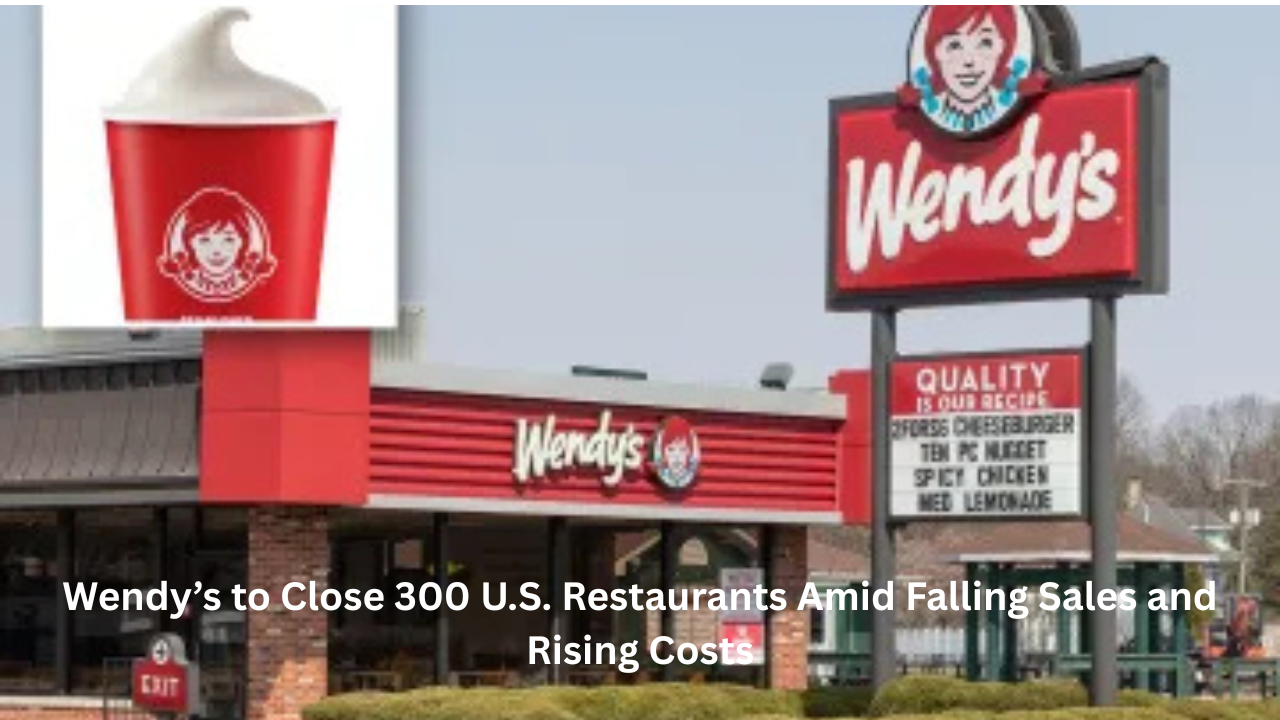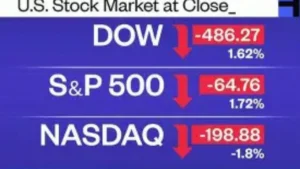Nov. 8, 2025 — New York: Wendy’s has announced a sweeping plan to close roughly 300 “underperforming” restaurants across the United States over the next year, marking one of the biggest restructuring efforts in the chain’s history.
The closures represent a mid-single-digit percentage of Wendy’s approximately 6,000 U.S. outlets and are expected to roll out through late 2025 and into 2026, Interim CEO Ken Cook confirmed during a Friday announcement.
“These actions will strengthen the system and enable franchisees to invest more capital and resources in their remaining restaurants,” Cook said. “Closures of underperforming units are expected to boost sales and profitability at nearby locations.”
Why Wendy’s Is Closing Hundreds of Restaurants
Wendy’s decision to shutter stores comes as the fast-food industry faces mounting challenges from inflation, rising labor costs, and shifting consumer spending habits.
Once known for its “fresh, never frozen” burgers and premium positioning, Wendy’s has struggled to maintain foot traffic amid price-sensitive consumers and an increasingly competitive market.
According to Restaurant 365’s Midyear State of the Restaurant Industry,
82% of restaurants have seen labor costs rise between 1% and 5%,
91% have experienced food cost increases, and
Over half reported a 1% to 5% rise in food inflation this year alone.
The company’s leadership believes that consolidating operations will allow franchise owners to refocus on higher-performing outlets, adopt new technology, and upgrade equipment to improve efficiency.
Sales Decline and Competitive Pressures
In its third-quarter earnings report, Wendy’s disclosed a 4.7% decline in U.S. same-store sales, a stark contrast to rivals like McDonald’s, Burger King, and Shake Shack, which all posted revenue gains during the same period.
Chief Accounting Officer Suzanne Thuerk noted that the decline was “primarily driven by a decrease in traffic,” with Wendy’s foot traffic dropping sharply in recent months:
July: -4.9%
August: -4.3%
September: -9.9%
These figures, provided by Placer.ai, underscore the growing challenge Wendy’s faces in drawing customers back to its restaurants.
At the same time, rivals like Chili’s have stepped up the pressure with aggressive value-based marketing. Chili’s “3 for Me” deal — offering an appetizer, entrée, and beverage for as little as $10.99 — has blurred the lines between casual dining and fast food, directly competing with Wendy’s Dave’s Combo, which averages around $12 in many markets.
Inflation’s Impact on Fast-Food Spending
The USDA Economic Research Service reported that “food away from home” inflation continues to squeeze restaurant margins and consumer budgets alike:
2024: +4.1%
2023: +5.8%
2022: +7.7%
As prices rise, many Americans are cutting back on dining out, particularly at mid-tier fast-food restaurants like Wendy’s, which are often priced slightly higher than budget rivals.
Wendy’s premium brand positioning — long a differentiator in the burger wars — has become a disadvantage as consumers seek cheaper meal options amid inflation and job market uncertainty.
Previous Closures and Future Outlook
This is not the first time Wendy’s has taken drastic measures to right the ship. The chain closed 140 restaurants in 2024 for similar performance reasons. However, despite these cuts, Wendy’s systemwide sales still fell 2.6% globally on a constant currency basis in the third quarter of 2025.
Cook emphasized that the upcoming closures will allow the company to “revitalize its brand image” and enable franchisees to reinvest in remodeling, digital enhancements, and customer experience upgrades.
In addition to closures, several existing locations will be transferred to new franchise owners or receive technology and equipment improvements, according to USA Today.Wendy’s Strategic Focus: Long-Term Profitability
Wendy’s, founded in 1969 in Columbus, Ohio, now operates over 7,300 restaurants globally and employs roughly 225,000 workers. Its systemwide sales reached $14.5 billion in 2024, up 3.1% year-over-year — but profitability has lagged behind peers.Cook and the leadership team are now focusing on a “system optimization” strategy that prioritizes efficiency, market performance, and better franchisee support.
“In terms of system optimization, based on what we know today, I’d estimate around a mid-single-digit percentage of U.S. restaurants will end up closing,” Cook told analysts. “This will strengthen our system, improve performance, and ultimately make Wendy’s more resilient.”
A Glimpse of Hope: New Menu Success
Despite the gloomy sales trends, Wendy’s has found a bright spot in its newly launched “Tendys” chicken tenders, which have exceeded expectations. Cook noted that some locations even sold out of the product before the advertising campaign began — signaling strong consumer interest.
“We’re looking forward to continuing that momentum,” Cook said. “This is an encouraging first step as we look to reestablish our leadership position in chicken.”
Conclusion: Wendy’s Faces a Crossroads
As Wendy’s prepares to close roughly 300 stores through 2026, the move underscores a broader reality facing the fast-food industry: consumers are more cautious, competition is fiercer, and inflation continues to eat into profits. While the closures will impact employees and communities in the short term, Wendy’s hopes the decision will lead to a leaner, stronger, and more profitable company in the years ahead — one better equipped to compete in the evolving burger landscape.








